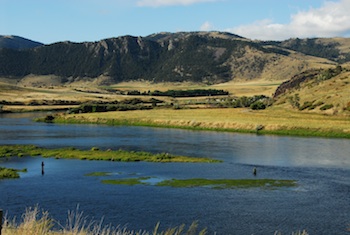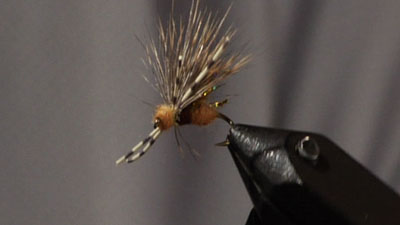 Is it really the ninth of August already? Two and a half weeks and the girls go back to school? Wow. Summer flies. And fish get educated. Say what?
Is it really the ninth of August already? Two and a half weeks and the girls go back to school? Wow. Summer flies. And fish get educated. Say what?
Thought it would be timely, given that most of the trout across this country have seen dozens of flies passing over their heads this summer, to offer a little about my tactics when the fish get picky and refuse a fly.
Here’s the situation: You’re fishing a dry on a freestone stream and some pig pulls away from the rocky and deep far bank, raises within a inch or two of the surface and tracks your size-16 Parachute Adams downstream. Just when you think he’s going to eat, he turns away and disappears into that darkness. Your body almost collapses and you say something your mother wouldn’t approve of.
So what to do? Keep casting the same fly over that fishes head? Typically, when I get refused, I’ll give the fish 30 seconds to a minute of reprieve before casting the same fly at him again. That’s when I’m blindfishing. If I’m on a piece of water like the Henry’s Fork or Silver Creek, casting to visible risers, I would not dare throw another cast until the fish is back at it, feeding at a steady clip.
So, in either case, let’s say it’s time to throw. In this case, I do so and the fish doesn’t even give the Parachute a sniff. So, what to do then? Always, I’ll switch the fly and most often tie on something that’s a size smaller. In this case I would swap out the size 16 Parachute Adams for a size-18 cripple or even a floating nymph. Or maybe there are caddis mixed in with mayflies. Maybe that’s what the fish is looking for. A crippled caddis might be a good choice too.
So let’s say the fish doesn’t eat your next offering, even when you given him three chances to do so. Time to look hard at your tippet and possibly go lighter, say from 4X to 5X or from 5X to 6X. Or maybe you change the angle of presentation so that the fly precedes the tippet. Still, it’s time to change flies again.
On a technical piece of water I would still be trying to match what the fish are eating, but on a freestone my next move, ninety percent of the time, is to try a cinnamon ant or a flying black ant. It’s the rare freestone fish that won’t take a look at an ant, even after other artificial flies have passed over their heads. And get this: few anglers think about terrestrials on the big, tough spring creeks and flat-surfaced tailwaters, but ants, beetles and hoppers draw takes there, too.
I know at this time of the year that some of the largest fish are well educated and they aren’t likely to rise to a single fly more than once. So, try the tactics I’ve discussed above and see if you don’t get a positive response. And let me know what you learn by commenting back. Hope this helps you on the water today, and through the rest of the season.
Want to tie a killer ant pattern. Check out the vid link below and give that ant a throw.


One Response to Fly Fishing 101: The bait and switch